As the maritime industry accelerates toward cleaner propulsion systems, the promise of hybrid and fully electric marine propulsion is undeniable. But while the technology advances and climate regulations tighten, there’s a less visible – but increasingly critical – obstacle in the way: the global supply chain. From geopolitical trade tensions to low production volumes and material scarcity, implementing hybrid and electric propulsion at sea is as much a logistical puzzle as a technical one.
The backbone of hybrid and electric propulsion systems includes a diverse array of advanced components: power electronics, battery cells, cooling modules, electric motors and complex controls software. Much of this hardware originates overseas, particularly in Europe and Asia. But tariffs, especially those arising from US-China trade tensions and other economic disputes, have thrown a wrench into sourcing strategies.
Compared with their conventional internal combustion counterparts, hybrid and electric vessel projects are already at a disadvantage from a capex standpoint, so any additional costs are especially unwelcome. Multiple recent public ferry electrification projects have been delayed or canceled as a result of rising costs outstripping fixed budgets established in prior years. Beyond cost increases, uncertainty surrounding trade policy makes long-term planning difficult. Companies cannot reliably forecast pricing or lead times when a key supplier might not be able to support a project due to a sudden policy shift. This discourages investment and innovation, two ingredients that are sorely needed to get hybrid and electric propulsion implemented at scale.
Programs such as the US Federal Transit Administration’s Buy America and the newly updated Build America, Buy America Act (BABA) impose strict domestic content requirements on many public ferry projects. These policies are intended to stimulate US manufacturing and job creation. But when applied to emerging technologies like marine electrification, they can have the opposite effect, creating bottlenecks instead of breakthroughs. The reality is that many components essential to electric and hybrid marine propulsion simply aren’t made in the US today. Attempting to meet strict domestic sourcing rules often requires project teams to redesign their entire system architecture or work with unproven or less efficient components, adding cost, schedule risk and complexity. Moreover, integrators and shipyards must navigate a patchwork of interpretations and waivers. In some cases, a waiver may be granted for a component like a BMS; in others, it might not – depending on the project’s federal funding source, local political context or even the agency official handling the file.
Some of the most mission-critical technologies in electric marine propulsion are available from only a handful of suppliers globally. One notable example is high-powered automatic charging systems for ferries. These systems,
which typically use robotic arms or crane-like elements to connect vessels to shoreside power in seconds, are essential to the feasibility of fast-turnaround electric ferry services. But as of mid-2025, there are only a handful
of global vendors with proven systems in this category – and each uses proprietary protocols and hardware.
Despite these challenges, the maritime industry is not standing still. Several strategies are emerging to mitigate the risks and build a more resilient supply chain for electric and hybrid propulsion:
- Diversification of suppliers: forward-looking integrators are working to qualify multiple vendors for key components, reducing dependency on any one source;
- Localized assembly and testing: some companies are investing in US-based final assembly of batteries and systems, which can help satisfy domestic content requirements even if upstream materials are imported;
- Modular designs: designing propulsion and energy systems around modular components enables easier upgrades and substitutions if suppliers or specs change;
- Standardization efforts: industry groups are collaborating to standardize connectors, protocols
and interfaces to ensure interoperability across vendors – particularly for charging systems.
The push for electric and hybrid marine propulsion will require not only technological innovation but also strategic agility. As regulations tighten and public expectations grow, operators must balance compliance, performance and procurement risks. Building more environmentally friendly vessels requires more than switching fuels – it means forging new partnerships, investing in domestic capabilities and designing modular, scalable systems that are resilient to the shocks of a changing world.
This article was originally published in the September 2025 issue of Electric and Hybrid Marine Technology. To view the magazine in full, click here.



